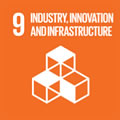Por favor, use este identificador para citar o enlazar a este item:
http://hdl.handle.net/10261/275901COMPARTIR / EXPORTAR:
 SHARE
BASE SHARE
BASE
|
|
| Visualizar otros formatos: MARC | Dublin Core | RDF | ORE | MODS | METS | DIDL | DATACITE | |

| Título: | Capacity of countries to reduce biological invasions |
Autor: | Latombe, Guillaume; Seebens, Hanno; Lenzner, Bernd; Courchamp, Franck; Dullinger, Stefan; Golivets, Marina; Kühn, Ingolf; Leung, Brian; Roura‑Pascual, Núria; Cebrian, Emma CSIC ORCID ; Dawson, Wayne; Diagne, Christophe; Jeschke, Jonathan M.; Pérez-Granados, Cristian; Moser, Dietmar; Turbelin, Anna; Visconti, P.; Essl, F. | Palabras clave: | Scenarios Trade Environmental performance Established alien species Governance Innovation Lifestyle |
Fecha de publicación: | 2022 | Citación: | Sustainability Science : doi:10.1007/s11625-022-01166-3 (2022) | Resumen: | The extent and impacts of biological invasions on biodiversity are largely shaped by an array of socio-economic and environmental factors, which exhibit high variation among countries. Yet, a global analysis of how these factors vary across countries is currently lacking. Here, we investigate how five broad, country-specific socio-economic and environmental indices (Governance, Trade, Environmental Performance, Lifestyle and Education, Innovation) explain country-level (1) established alien species (EAS) richness of eight taxonomic groups, and (2) proactive or reactive capacity to prevent and manage biological invasions and their impacts. These indices underpin many aspects of the invasion process, including the introduction, establishment, spread and management of alien species. They are also general enough to enable a global comparison across countries, and are therefore essential for defining future scenarios for biological invasions. Models including Trade, Governance, Lifestyle and Education, or a combination of these, best explained EAS richness across taxonomic groups and national proactive or reactive capacity. Historical (1996 or averaged over 1996–2015) levels of Governance and Trade better explained both EAS richness and the capacity of countries to manage invasions than more recent (2015) levels, revealing a historical legacy with important implications for the future of biological invasions. Using Governance and Trade to define a two-dimensional socio-economic space in which the position of a country captures its capacity to address issues of biological invasions, we identified four main clusters of countries in 2015. Most countries had an increase in Trade over the past 25 years, but trajectories were more geographically heterogeneous for Governance. Declines in levels of Governance are concerning as they may be responsible for larger levels of invasions in the future. By identifying the factors influencing EAS richness and the regions most susceptible to changes in these factors, our results provide novel insights to integrate biological invasions into scenarios of biodiversity change to better inform decision-making for policy and the management of biological invasions. | Descripción: | Este artículo contiene 19 páginas, 4 figuras, 2 tablas. | Versión del editor: | https://doi.org/10.1007/s11625-022-01166-3 | URI: | http://hdl.handle.net/10261/275901 | ISSN: | 1862-4065 | E-ISSN: | 1862-4057 |
| Aparece en las colecciones: | (CEAB) Artículos |
Ficheros en este ítem:
| Fichero | Descripción | Tamaño | Formato | |
|---|---|---|---|---|
| Latombe 2022.pdf | 2,54 MB | Adobe PDF |  Visualizar/Abrir |
CORE Recommender
NOTA: Los ítems de Digital.CSIC están protegidos por copyright, con todos los derechos reservados, a menos que se indique lo contrario.


